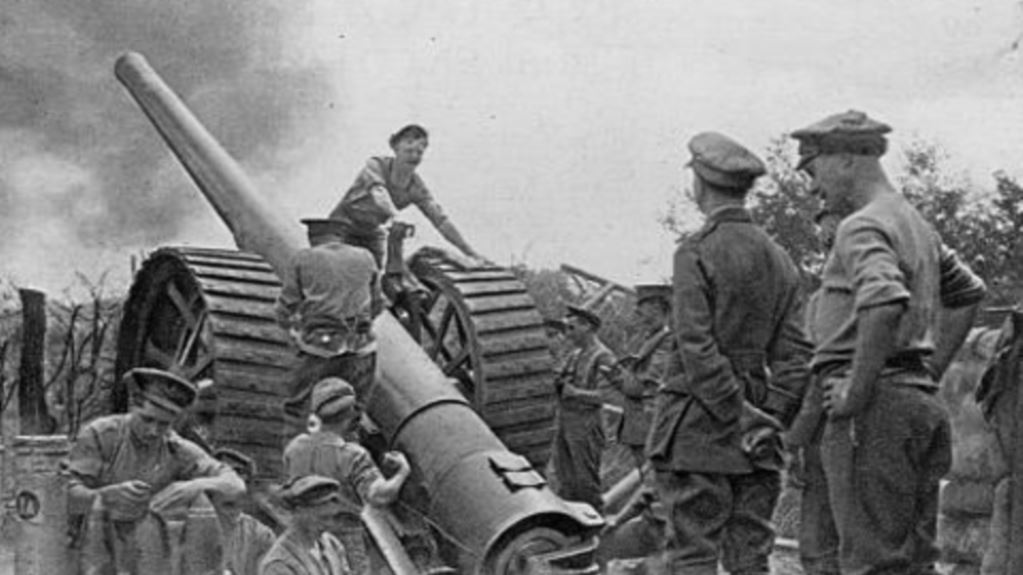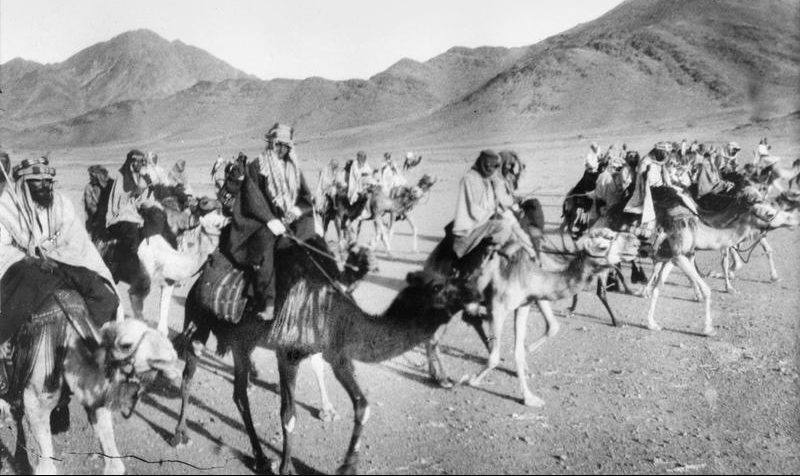World War One Timeline
Home / History / World War One / World War One Timeline
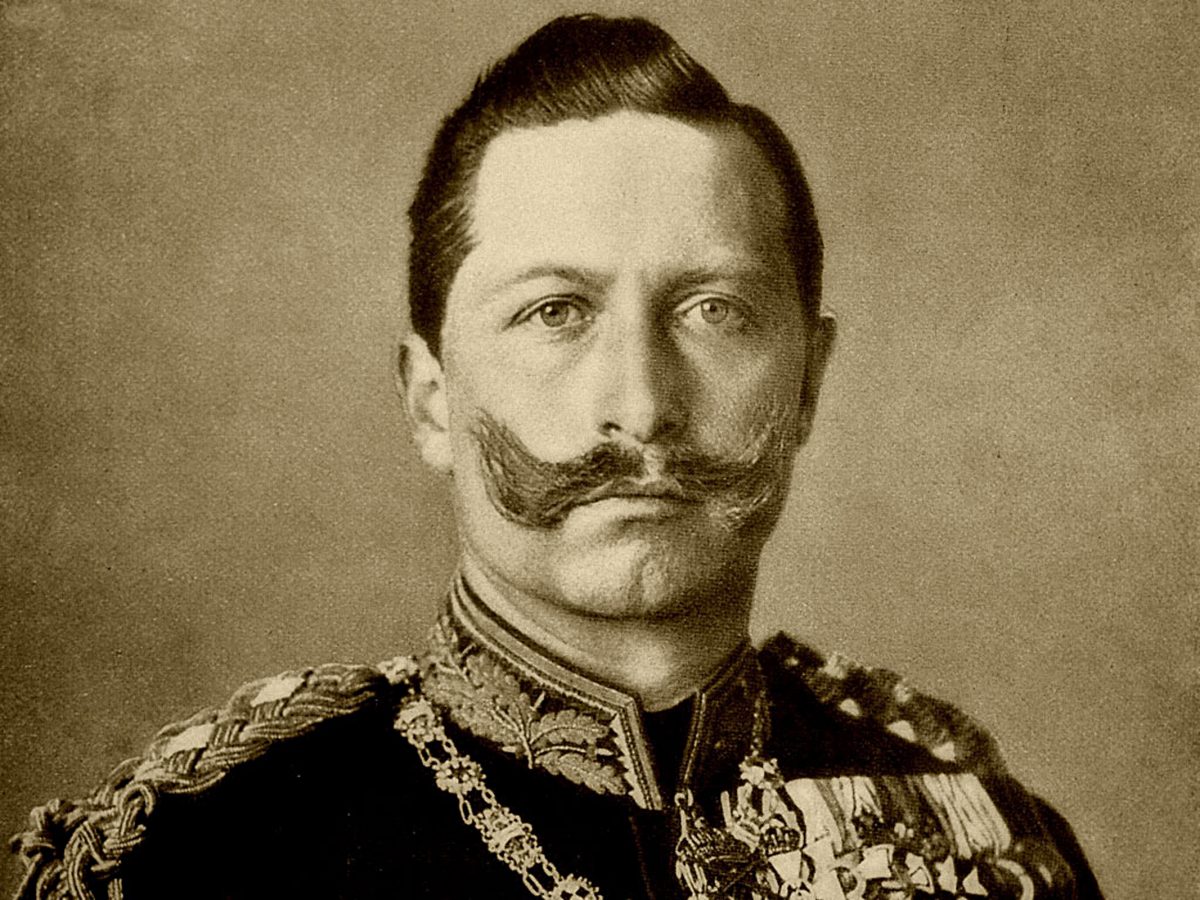
Kaiser Wilhelm II of Germany “Kaiser Bill” stirs up trouble in Europe
World War One Timeline
World War One Timeline: 1914
- 28th June: Archduke Franz Ferdinand, heir to the Austro-Hungarian Empire, is assassinated in Sarajevo by a Serbian nationalist.
- 5th July: Kaiser William II of Germany promises Austria support against Serbia.
- 28th July: Austria declares war on Serbia.
- 29th July: Russia mobilises its forces against Austria in support of Serbia.
- 1st August:
- Russia refuses German demands to stand down its troops therefore Germany declares war on Russia.
- France mobilises its army in support of its ally Russia.
- 3rd August:
- France and Germany declare war on each other.
- Germany invades neutral Belgium as devised in the Schlieffen Plan.
- 4th August: Britain declares war on Germany because:
- Britain had promised to defend Belgium under the Treaty of London of 1830,
- Britain had agreed an Entente Cordial with France, and
- British Foreign Policy in Europe had long been to prevent any one nation dominating the continent as Germany now threatened. (NB. War against Germany was inevitable sooner or later as they were being belligerent and conducting an arms race. If Britain had not gone to war at this point and Germany had defeated the other allies, Britain would have had a much worse military position to deal with later.)
- 7th August: The British Expeditionary Force (BEF) starts landing in France.
- 23rd August:
- The British Army fights its first battle in Europe since Waterloo at the Battle of Mons. While heavily outnumbered, the small but professional British army inflicts heavy casualties on the German Army. The battle turns into a fighting withdrawal as the French and Belgium armies fail to hold the Germans at the Battle of Frontiers.
- Germany invades France.
- 26th – 30th August : Germany defeats Russia at the Battle of Tannenburg with the almost complete destruction of the Russian Second Army.
- 4th September: The German Army gets within 20 miles of the east of Paris.
- 5th September – 12th September: British and French Armies counter attack and push the Germans back at the First Battle of the Marne.
- 9th – 14th September: Germany mauls the Russian First Army at the Battle of the Masurian Lakes.
- September & October: The Race to the Sea. On the Western Front, the Germans try to outflank the Allies on their western flank as the War spreads on an ever wider front.
- 18th October – 30th November: First Battle of Ypres sees desperate fighting by the British to hold onto the Ypres Salient. Loosing here would see a German break-through and the capture of the channel ports preventing Britain’s continued involvement in the war and leaving France to the mercy of the German Schlieffen Plan.
- 29th October: Turkey’s Ottoman Empire makes a surprise attack on Russia in the Black Sea for no apparent reason other than to take advantage of the current situation..
- 5th November: Britain & France declare war on the Ottoman Empire which now allies itself with Germany.
- December: The stalemate in the Race to the Sea leaves both sides in trenched defensive positions on the Western Front which will change little until Germany’s Spring Offensive in 1918.
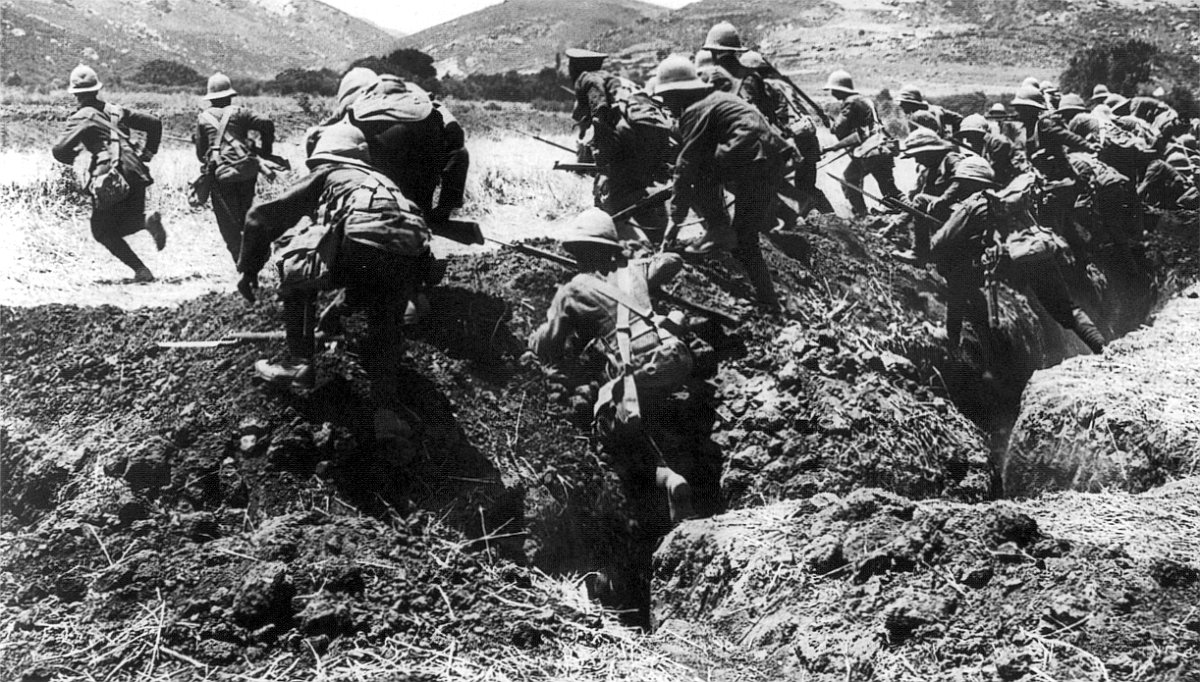
Churchill’s plan to take Turkey out of the War at Gallipoli fails
World War One Timeline: 1915
- 19th January: The first air raid on Britain when two German Zeppelins, seeking to bomb key wartime military and industrial sites on Humberside, hit residential areas in Great Yarmouth and King’s Lynn killing four civilians.
- 19th February: Royal Navy bombards Turkish forts in the Dardanelles.
- 22nd April – 25th May: Second Battle of Ypres: British and Canadian troops hold off German attempts to capture the city which is bombarded and largely destroyed. It marks the first mass use by Germany of poison gas on the Western Front.
- 25th April: Allied troops land in Gallipoli in a campaign inspired by Winston Churchill who at the time was in charge of the Navy.
- 26th April: Italy enters the war on the side of Britain, France & Russia. Before the war Italy had been part of the Triple Alliance with Germany and Austria-Hungry but had not entered the war at the outset.
- 7th May: Cunard ocean liner RMS Lusitania is sunk by a German U-boat killing many American civilians which nearly brings America into the war.
- 23rd May: Italy declares war on Germany and Austria.
- 5th August: The Germans capture Warsaw from the Russians (NB: At the time Poland had not existed as a country for over one hundred years as it had been partitioned between Germany, Russia and Austria.)
- 25th – 28th September: The Battle of Loos. The British attack in the Champagne region of France was designed to restore a war of movement. But the Germans contain all British attacks.
- 15th November: Winston Churchill resigns from the government over the failure of the Gallipoli campaign.
- 19th December: The Allies start the evacuation of Gallipoli. The campaign’s failure is largely due to a lack of offensive co-ordination between the Royal Navy and the Army and this experience led Churchill to bring all armed services under one command in the Ministry of Defence when he became Prime Minister in 1940.
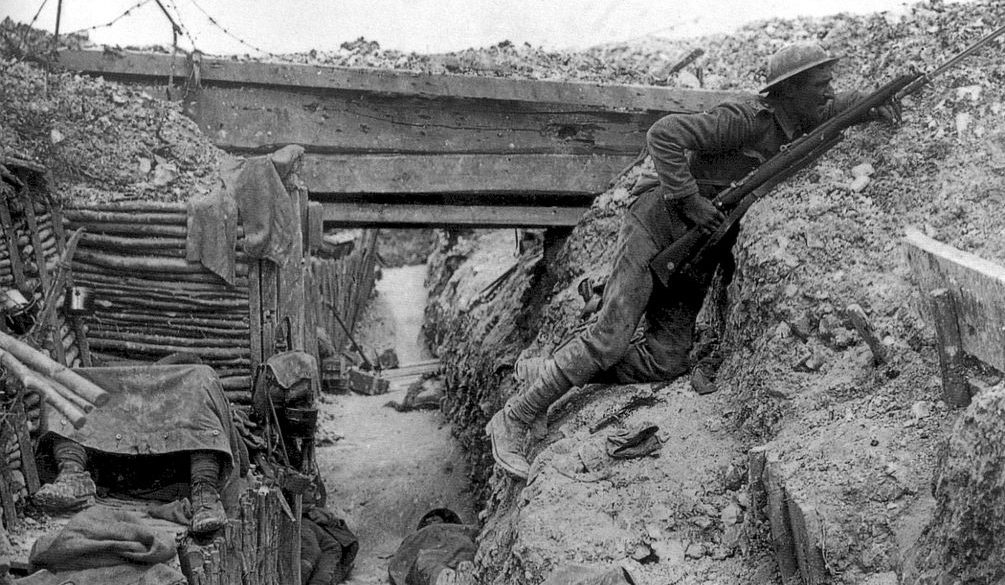
Trench Warfare on the Western Front
World War One Timeline: 1916
- 27th January: Conscription is introduced for the first time in Britain.
- 21st February – 18th December: The Battle of Verdun; the largest and longest battle of the war fought between French troops and the Germans. It is estimated that both sides suffered in excess of 300,000 casualties leaving the French (who, at the same time, also lost 200,000 troops on the Somme) a much weaker force for the remainder of the war.
- 24th April: Eastern Rising in Ireland.
- 29th April: In Mesopotamia, the 8,000 strong besieged British-Indian garrison in the town of Kut (100 miles south of Baghdad) surrender to the Ottoman Army.
- 31st May: British and German fleets fight the inconclusive Battle of Jutland. Prior to the war there had been a naval arms-race between Britain and Germany over the Dreadnought Battleships. However, in this battle the Admirals on both sides are too concerned about loosing one of their big battleships to commit them fully to the battle. This would be the last naval battle between fleets of battleships.
- 4th June – 10th August: The Brusilov Offensive: At the request of France, Russian General Aleksei Brusilov undertakes a massive offensive against Austro-Hungary to take the pressure off the French at Verdun. Both Russia and Austro-Hungry suffer around 600,000 casualties and German has to move troops from Verdun to support their ally.
- 1st July – 18th November: The Battle of the Somme. Originally a French-planned Offensive with some British support is now mostly undertaken by the British to help relieve the pressure on the French Army at Verdun. There is no break-through but its inflicts terrific attrition on the Germans who loose over 600,000 troops. The first day proved to be the most costly in British military history with 57,470 casualties including 19,240 fatalities.
- 15th September: Tanks are used on a large scale for first time during the Battle of the Somme.
- 7th December: David Lloyd George becomes British Prime Minister.
The Allies rely upon the heavy bombardment of enemy positions before making an infantry attack
World War One Timeline: 1917
- 9th January: Germany declares unrestricted submarine warfare which threatens American ships trading with Allied countries.
- 19th January: The Zimmermann Telegram is intercepted and decoded by British intelligence. This is a secret document from the German Foreign Office to Mexico proposing a military alliance between them. Germany offers Mexico help to recover Texas, Arizona and New Mexico. This revelation enrages American public opinion.
- 6th April: USA declares war on Germany
- 16th April: France launches The Nivelle Offensive, another unsuccessful offensive on the Western Front.
- 6th July: The Battle of Aqaba – Lawrence of Arabia leads Arab troops in the capture of the city of Aquab from the Turks.
- 17 July: The British Royal family changes it name to Windsor from Saxe-Coburg-Gotha.
- 31st July – 10th November: The Third Battle at Ypres, also known as the Battle of Passchendaele. One of the most controversial British Offensives of the war where the British try to shift the Germans from the ridge overlooking Ypres. British and Canadian forces capture the village of Passchendaele but at very high cost. Tyne Cot, the largest Commonwealth War Grave in the world, is largely a result of this battle.
- 24th October: Battle of Caporetto – Germany, having persuaded Austro-Hungry to remain in the war assisted them in heavily defeating the Italian Army which had been pushing into southern Austria.
- 6th November: Britain launches a major offensive on the Western Front
- 20th November: British tanks win a victory at Cambrai
- 5th December: Armistice between Germany and Russia signed
- 9th December: Britain captures Jerusalem from the Turks
Lawrence of Arabia leads Arab Troops against the Turks
World War One Timeline: 1918
- 3rd March: The Treaty of Brest-Litovsk is signed between Russia and Germany.
- 21st March: With attritional losses in the army and near starvation at home, the German High Command decides they need to go on the offensive. The German Spring Offensive begins as they break through on the Somme.
- 29th March: France’s Marshall Foch is appointed Allied Supreme Commander on the Western Front.
- March: American troops start arriving on the Western Front under the command of General Pershing.
- 9th April: Germany’s Spring Offensive now begins in Flanders.
- 15th July: Second Battle of the Marne started. The start of the collapse of the German army
- 8th August: The Allies defeat the Germans at the Battle of Amiens (on the Somme). This is the start of the Hundred Days Offensive which wins the war for the Allies.
- 19th September: Turkish forces collapsed at Megiddo.
- 1st October: Allies capture Damascus from the Ottomans with British Army under General Allenby and Arab Forces supported by Lawrence of Arabia.
- 4th October: Germany asks the Allies for an Armistice.
- 29th October: German Navy mutinies.
- 30th October: Turkey seeks terms and agrees to the Armistice of Mudros which amounts to a virtual surrender.
- 3rd November: Austria make peace
- 9th November: Kaiser William II abdicates
- 11th November: Germany signs an armistice with the Allies – the official date of the end of World War One.
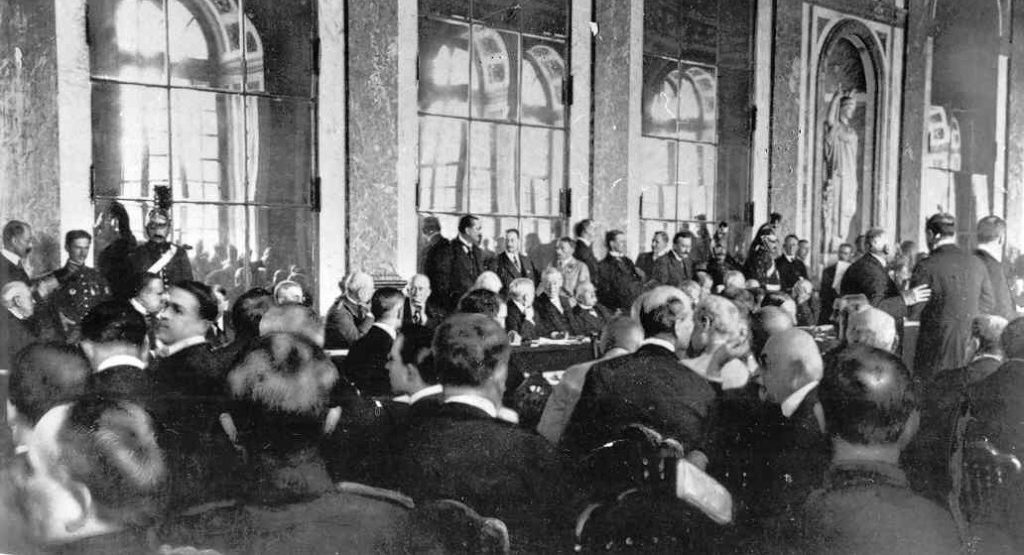
Paris Peace Conference leads to the Treaty of Versailles
World War One Timeline: Post War – 1919
- 4th January: the Peace Conference meets at Paris.
- 21st June: The surrendered German naval fleet at Scapa Flow is scuttled.
- 28th June: The Treaty of Versailles is signed by the Germans.

